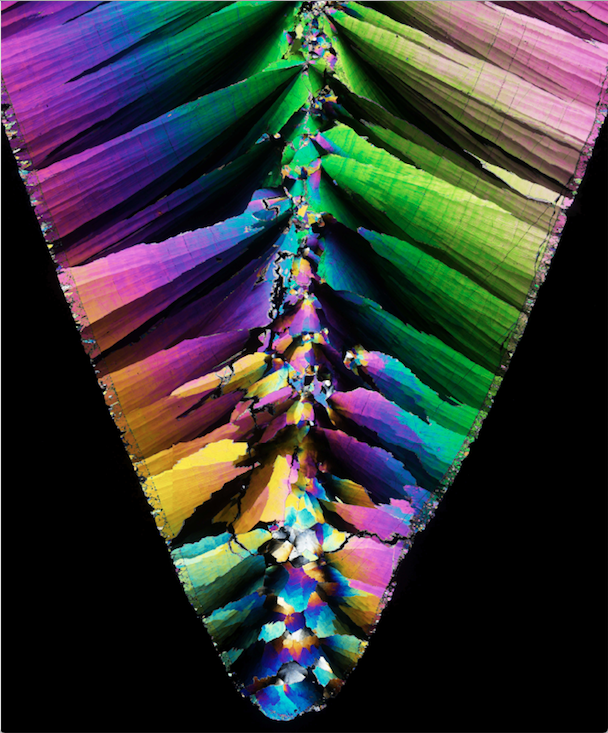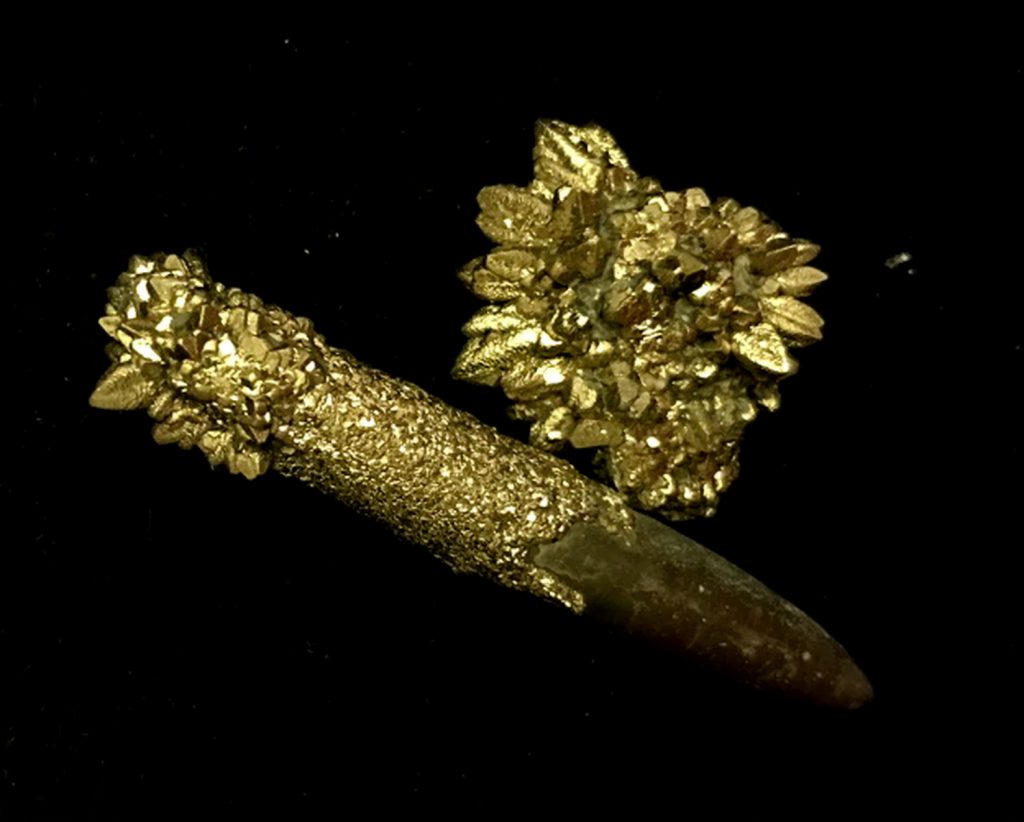
Belemnite under a microscope. Credit: Rene Hoffmann (distributed via imaggeo.egu.eu)
The photo above is an image of a part of a belemnite, an ocean animal that lived millions of years ago, whose closest living relatives are squid. Because these marine creatures lived in the time of the Jurassic (and Cretaceous, overall from around 201 to 66 million years ago), they are important for the work done by researchers of the JET project.
Belemnites have a hard skeleton on the inside, with a part that looks a bit like a bullet and is called “rostrum”. This rostrum is often found as fossil remains in rocks from the Jurassic.

Fossilised belemnite rostrum (bullet shaped, bottom). The shiny mineral is called pyrite (also known as fool’s gold). Credit: Natalia Gromalova (distributed via imaggeo.egu.eu)
The rainbow coloured photo above was taken with a special microscope that uses filters to polarise the light entering and exiting the thin section (just like polarised sunglasses). That way scientists can learn more about the minerals that make up a sample. In the case of the belemnite above, the beautiful colouring and texture is due to the polarised light entering and exiting calcite crystals, a mineral commonly found in rocks such as marble.
To do this analysis, the belemnites are sliced into extremely fine slices that are so thin that light can pass through (so-called “thin sections”). This is a common process also used to study rocks. The slices are then mounted on a glass plate so they can be looked at under a microscope.
The methods Ullmann and his colleagues use are very similar to those discussed here earlier, when introducing Dr Xu’s research about isotopes. After looking at them under a microscope, parts of the belemnite can be turned into a fine powder and processed further for analysis of its chemical composition.
By studying the structure and chemical composition of these fossils, researchers like Dr Clemens Ullmann on the JET project can learn more about the conditions these creatures were living in, and draw conclusions about the climate and other factors influencing the sea environment millions of years ago.